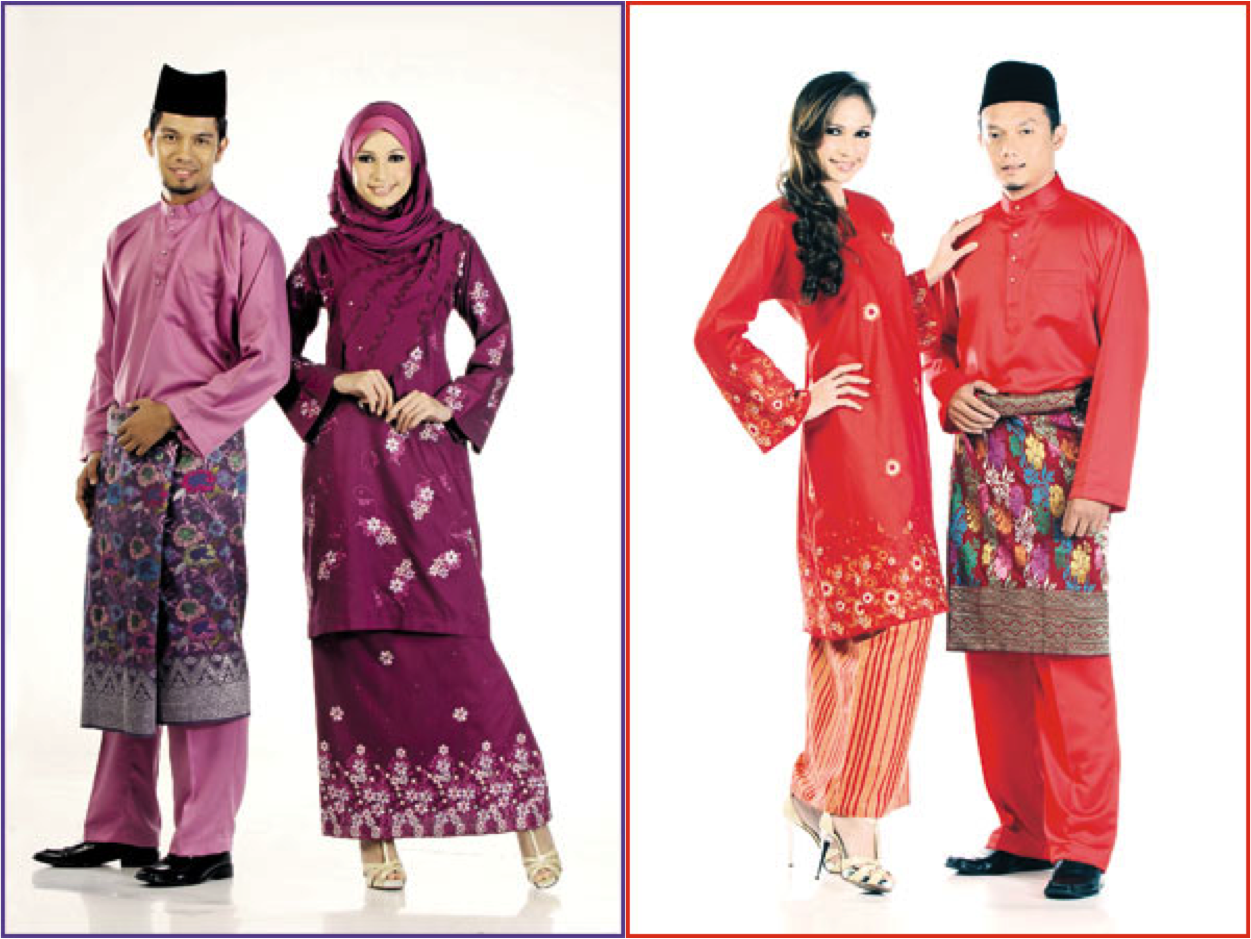
There is no individual Traditional Malay Costume. But all the attires are divided into different main groups- Malay, Indian, Chinese and Orang Asli. Malaysia is a beautiful country where diverse cultures mix and connect. But there’s more to learn about the Traditional Malay Costume. Malaysia has a wide selection of folk attires worn by both locals and the successors of the aliens from the different countries, from the simple clothes created from natural fabrics to delicate costumes embellished with sophisticated embroidery.
Male Traditional Costumes
Malay men dress trousers, baggy coat, a kilt draped around their hips and a headpiece. The tunic is known as “baju melayu” while a saree or skirt is called “sampin”. The ends are stitched together. Malay men’s attires are made out of multi-colored cotton or silk fabric.
As with the headpiece, the cap referred to as “songkok” is worn (it’s truncated cone-shaped). Another famous Malay headgear is called “tengkolok” or “tanjak”. It is made out of long songket fabric (classic Malay hand-crafted material with gold and silver threads) creased and tied in a unique shape.

The Malaysian Chinese lads (the aliens from China and their offspring) conventionally wear a shirt with short or long sleeves, pants, and thongs. The slacks are created from soft fabric. In the humid weather, such trousers are comfortable. The shirts are from the same material as ladies cheongsam (the costume of Malaysian Chinese ladies) however, the buttons are on the front.
Malaysian Indian men are the family of the Indian Immigrants. So, their classic attire is like Indian traditional costumes but has some qualities of the Malay costume. The conventional clothes of Malaysian Indian men include a lungi, a kurta, a dhoti, and a sherwani. The kurta is a mid-length linen or cotton shirt. It is style, decorated with needlework and design on the material. It is paired with loose-fitting pants. The kurta is a special fabric and the most well-known among the Malaysian Indians. The lungi is a skirt, it is covered around the stomach. The soft material helps support men in enduring the scorching hot weather. This material is laid-back, used in everyday life. The sherwani is a soft long coat that falls under the knee. It is dressed in covering the kurta. The dhoti is around 4.5 meters of material, covered around the stomach and legs which makes baggy pants. The dhoti and sherwani are seldom used in Malaysia, unlike the lungi and kurta. But all four materials are still important.
Female Traditional Costume
Before Islam became famous in the country, the Malay women are wearing sarongs which are referred to as “kemban” and are draped around the chest. Over the years, Malay ladies changed the kemban with simpler attires – a mid-length top, a long saree, and a shawl or scarf. The blouse is referred to as “Baju Kurung”, while the kilt is referred to as “kain”. The sarong and shawl are vibrant and colorful. There are various ways of covering the skirt based on the costume and need of a Malay woman. Like for example, the kilt is used as a sling when carrying a baby and the shawl is called “selendang”. When saree referred to as “tudong” “tudung” or “tudung” is dressed as a headpiece. It hides the hair, ears, and neck while leaving the face open. The “tudung” in Malaysia is a special headpiece for schools, offices, and other organizations, as well as for formal events.
Baju Kebaya is another Traditional Malay Costume. It’s a close-fitting two-part costume. Kebaya consists of a blouse and dress, made out from the soft materials (nylon, polyester, silk and fine cotton) and styled with floral designs. This is usually worn with a saree and this costume is less formal, unlike baju kurung. Malay women are wearing Baju Kebaya in everyday life.
The Traditional Malay Costume is made out of locally hand-made fabrics called “batic” and “songket”. The songket is a hand-crafted brocade material, the silk or cotton threads connect with the gold or silver strings. This clothing has an interesting glittering effect. It is beautiful with all the designs sewed to the material that is glistening under the sun. The batik material is made by using a unique method of wax-resist coloring. It is veiled with impeccable patterns and looks classy. With these fabrics Malay costumes are fancy, wide-ranging and happy.

